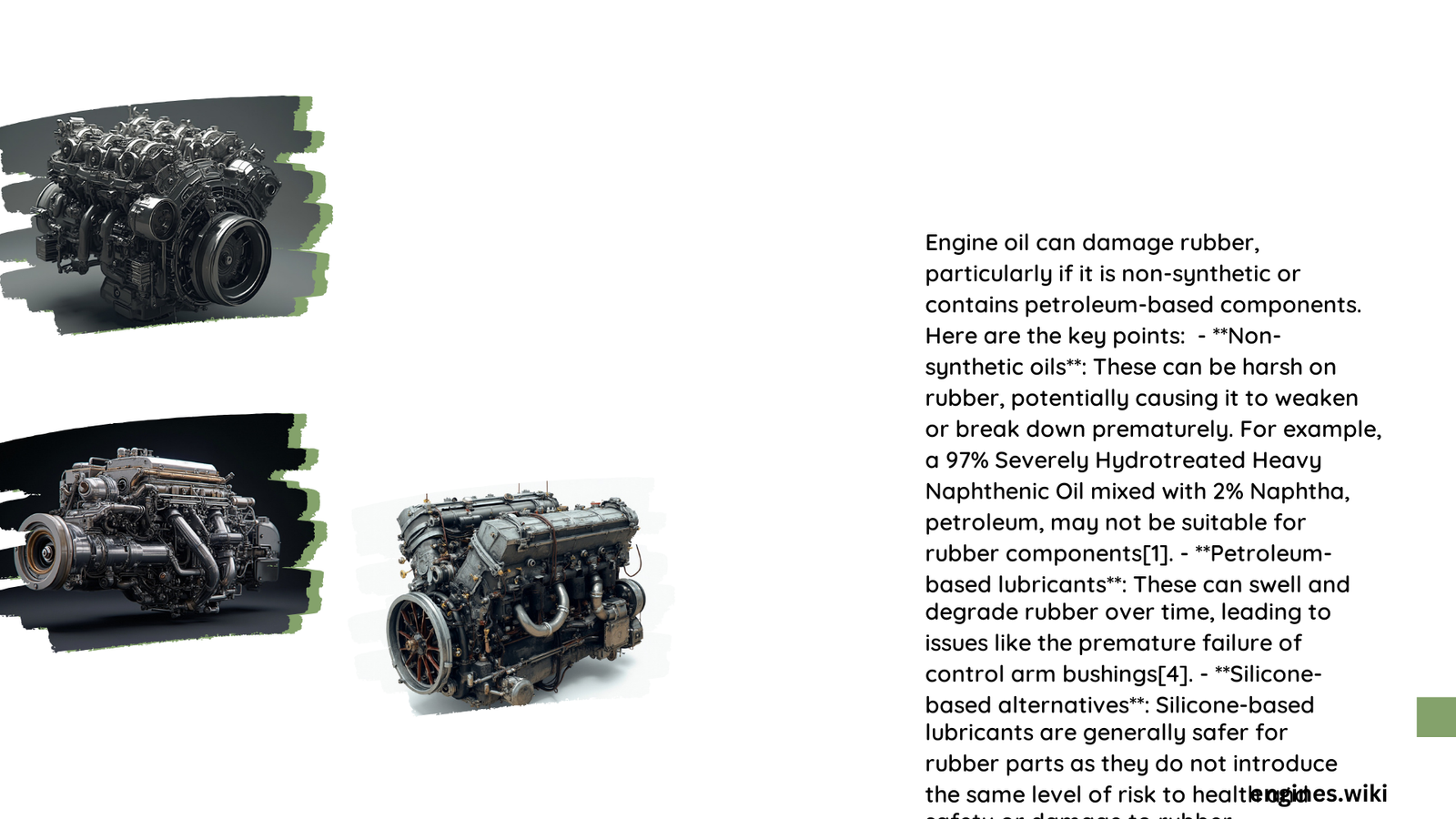Engine oil can significantly damage rubber through complex chemical interactions, causing molecular breakdown, swelling, and structural deterioration. Different rubber types experience varying levels of degradation based on their chemical composition, oil characteristics, and environmental conditions. Understanding these mechanisms is crucial for preventing premature failure of rubber seals, gaskets, and components in automotive and industrial applications.
What Causes Rubber Degradation from Engine Oil?
Chemical Interaction Mechanisms
Engine oil damages rubber through multiple intricate processes:
- Molecular Penetration
- Oils infiltrate rubber’s molecular structure
- Causes internal structural changes
-
Weakens rubber’s mechanical properties
-
Oxidative Breakdown
- Oxygen and oil compounds trigger chemical reactions
- Generates free radicals
- Accelerates material deterioration
Rubber Type Vulnerability
| Rubber Type | Oil Resistance | Degradation Rate |
|---|---|---|
| Nitrile (NBR) | Moderate | Medium |
| EPDM | Low | High |
| Silicone | High | Low |
| Natural Rubber | Low | Very High |
How Does Oil Composition Impact Rubber Damage?

Synthetic vs. Conventional Oils
Synthetic Oils:
– Better high-temperature stability
– Lower molecular interaction
– Reduced degradation potential
Conventional Oils:
– Higher chemical reactivity
– More aggressive molecular penetration
– Faster rubber deterioration
Factors Accelerating Rubber Damage
- Temperature exposure
- Oil chemical additives
- Pressure and mechanical stress
- Duration of continuous exposure
What Physical Changes Occur in Rubber?
Rubber experiences multiple transformative changes when exposed to engine oil:
- Structural Modifications
- Increased material hardness
- Reduced elasticity
-
Decreased tensile strength
-
Volume Transformations
- Potential swelling
- Dimensional instability
- Compromised sealing capabilities
Preventive Strategies for Rubber Protection
Maintenance Recommendations
- Select chemically compatible rubber grades
- Use specialized protective coatings
- Implement regular inspection protocols
- Replace components at recommended intervals
Material Selection Guidelines
Recommended Rubber Types for High Oil Resistance:
– Fluorocarbon (Viton)
– Perfluoroelastomer
– Advanced synthetic compounds
Scientific Insights into Rubber-Oil Interactions
Quantitative Degradation Analysis
Research indicates:
– 20-30% hardness increase after prolonged oil exposure
– 50-60% reduction in elongation capabilities
– Potential complete material failure within 1000 hours
Technical Mitigation Approaches
- Advanced Rubber Formulations
- Incorporate antioxidant additives
- Enhance cross-linking structures
-
Improve chemical resistance
-
Protective Engineering
- Design specialized sealing mechanisms
- Implement multi-layer protection strategies
- Develop temperature-resistant compounds
Conclusion
Understanding the complex interactions between engine oil and rubber requires comprehensive scientific analysis. By recognizing degradation mechanisms and implementing strategic preventive measures, engineers and maintenance professionals can significantly extend rubber component lifespan.
